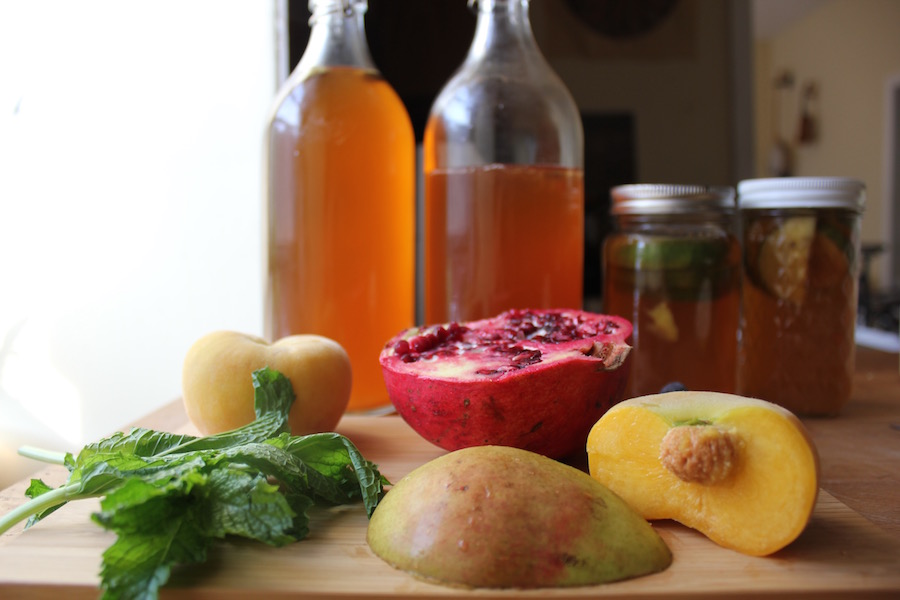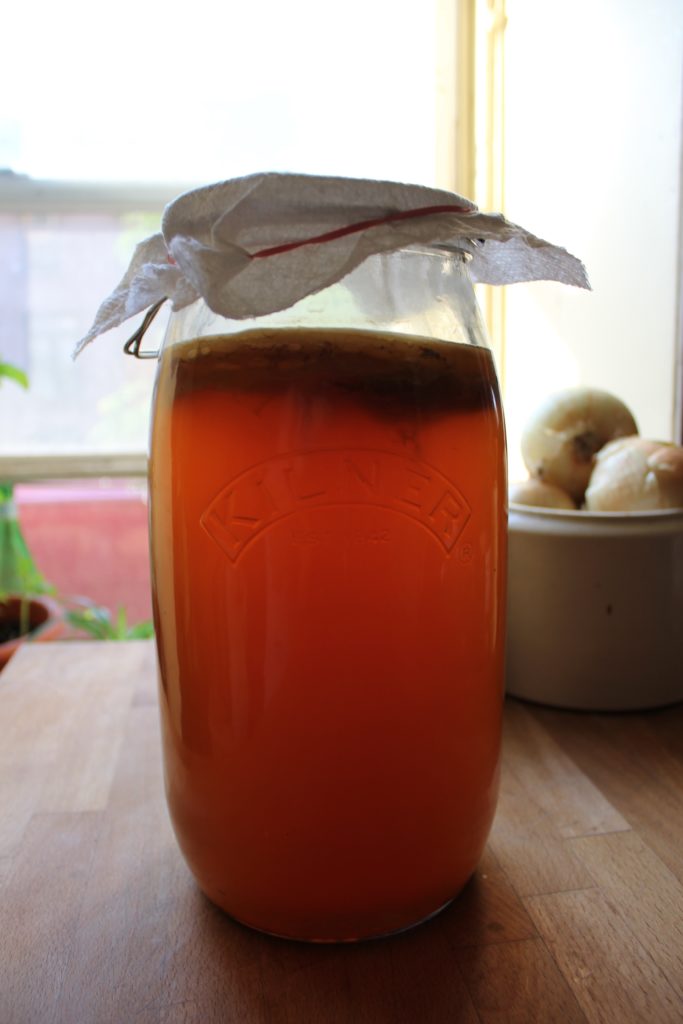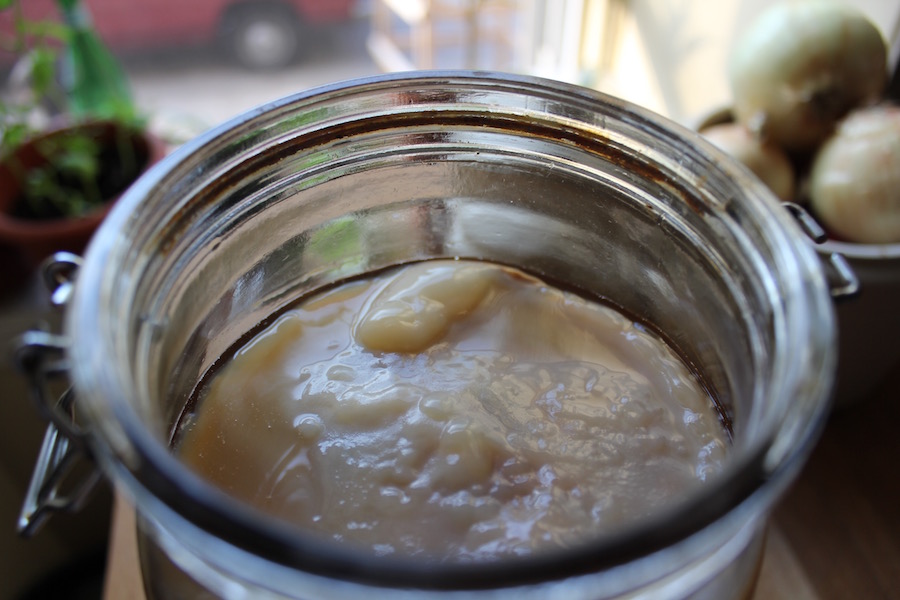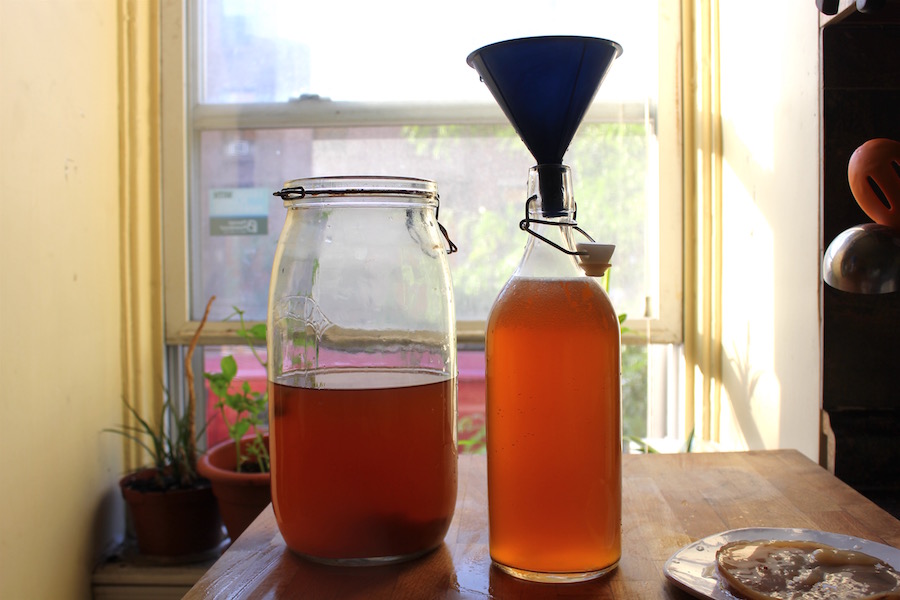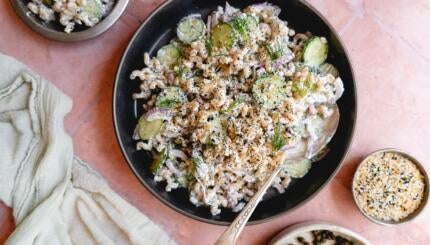Every summer, I experiment with refreshing iced teas and herbal concoctions to beat the heat. Of these, my favorite happens to be kombucha–that effervescent fermented tea that took America by storm five or so years ago.
All you need is a large glass vessel, black or green tea, sugar, and a starter called a scoby (Symbiotic Culture of Bacteria and Yeast). In 10-12 days, you’ll have kombucha, which you can flavor with fresh fruits and herbs. This bubbly tonic smells and tastes slightly like apple cider vinegar, and it’s full of probiotics which improve digestion, mood, and energy. I’ve never noticed any of these effects, though. Honestly, I just like the way that it tastes!
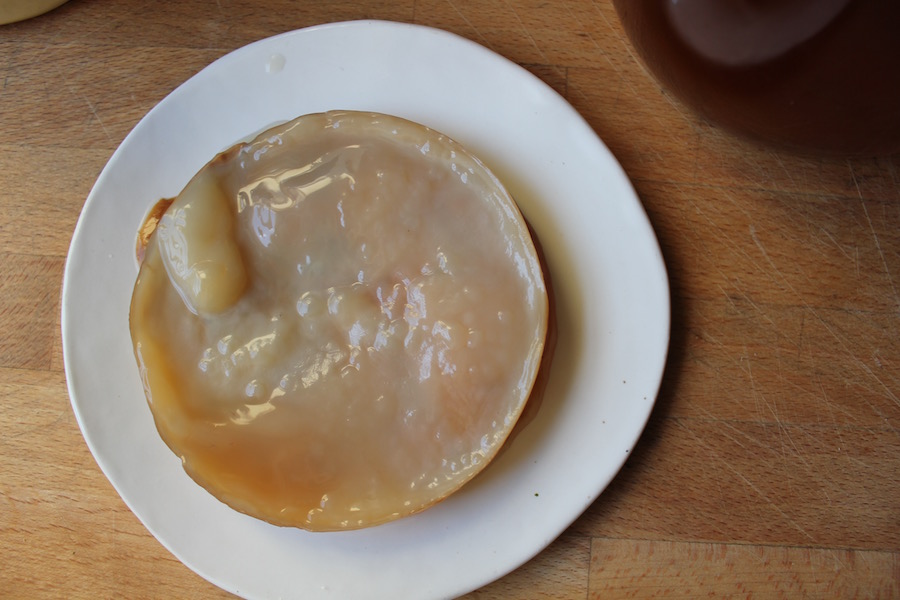
This is what a scoby looks like.
Although the origin and etymology of kombucha are unknown, it’s been a popular drink in China, Japan, Korea, Vietnam, and Russia for centuries. Legend has it that the armies of Genghis Khan introduced kombucha to Russia, where it quickly caught on. Today, it’s known in Russia as chaynyy grib (чайный гриб), which translates as “tea mushroom” or “tea fungus.” Although its popularity in Europe was stunted by WWII rationing of sugar and tea, it was revived in the 1960s, eventually making its way into natural food stores in the US.
The Nosher celebrates the traditions and recipes that have brought Jews together for centuries. Donate today to keep The Nosher's stories and recipes accessible to all.
Today, in many parts of Manhattan and Brooklyn, you can’t walk into the narrowest of corner stores without finding at least one or two varieties. Put off by the steep price of $4 per bottle, I decided to make it myself and got a “mother” scoby from a friend. If you don’t have one, don’t worry–I’ll show you how to make one below.
A gallon of kombucha in the first fermentation phase.
Despite my great appreciation for this fizzy, fermenty drink, I don’t actually drink too much of it–just a few ounces here and there. I bottle it into nice glass jars and bring to dinner parties as a fun cocktail mixer or alternative to sangria. What I really love about kombucha is the process of brewing it and experimenting with new flavor combinations.
Here are some recipes that draw from the vibrant flavors of Yotam Ottolenghi’s Jerusalem. They pair nicely with zesty spanikopita or our Israeli 7 Layer Salad.
Dill, Cucumber, Lemon Zest and Peach Kombucha
Cardamom Pear Kombucha
Pomegranate Rosewater Kombucha
Orange Blossom Water, Cucumber, and Mint Kombucha
Ingredients
Equipment:
1 gallon jar with a wide mouth
16 oz or 32 oz glass jars with lids (plastic lids are best) for the second and third fermentations
Funnel (if using jars with small mouths)
Strainer (recommended, but optional)
Cheesecloth, tea towel, or paper towel
Rubber band
Base tea for all kombucha recipes:
8 tea bags (or 3 Tbsp) of unflavored green tea or black tea (I like to mix them)
1 cup of sugar
2 cups of kombucha (store-bought for the first batch, then save kombucha of your own for your next batch)
Here are some flavor combinations to try. These amounts were for 1/2 pint jars. Increase quantities of these ingredients if using larger jars.
Dill, Cucumber and Peach Kombucha
2 sprigs of dill
1/4 peach, cubed
4 slices of cucumber (1/4" thick)
Cardamom Pear Kombucha
4 cardamom pods, crushed a bit
1/3 cup pear, cut into 1/2" cubes
Pomegranate, Mint and Rosewater Kombucha
1/3 cup pomegranate seeds
1 tsp rosewater
2 sprigs of fresh mint (10-15 leaves)
Orange Blossom Water, Cucumber, and Mint Kombucha
4 slices of cucumber
1 tsp orange blossom water
2 sprigs of mint (10-15 leaves)
Directions
First, obtain a scoby. Here's how to get one:
- Make one by combining a bottle of store-bought kombucha with sweet tea, with instructions from theKitchn.com
- Buy one online from Get Kombucha or other sources on Amazon.
- Get one from a friend who brews kombucha regularly
Next, bring 3 quarts (12 cups) of water to boil. Remove from heat and add sugar and tea and steep until it's at room temperature. It will take a few hours.
Pour tea into a clean 1-gallon jar. Add starter kombucha, and place your scoby gently on top of the tea. Cover the jar with a few layers of cheesecloth, a tea towel, or a thick paper towel. Secure with a rubber band. Store in a place that doesn't get much sunlight, like a cupboard, shelf, or on top of the refrigerator, and let sit for 8-10 days.
On day 8, begin taste-testing your kombucha by pouring a little into a glass (just a tablespoon or so) and sipping. If it's still sweet, it will need a few more days. It becomes less sweet the longer it sits. It's okay if it tastes like vinegar--you'll sweeten it with fruit next.
Note: Fermentation is weather-dependent. If it's hot out, kombucha might be ready on day 8. If it's in the middle of winter, the process might take a few more days.
When the kombucha is at your preferred level of sweetness, gently remove the scoby from the jar with clean hands and place into a bowl and set aside. It's a good idea to start brewing another batch of tea at this point, since the scoby does not like to be outside of it's tea-home for too long.
Set aside 2 cups of kombucha for your next batch. Then pour kombucha into smaller jars for the second round of fermentation. Add your desired fruits, spices, and herbs to the jars of kombucha and cover tightly with a lid. Let sit for another 1-2 days out of direct sunlight. Your kombucha will take on new flavors and become more carbonated during this bottling.
Next, strain the kombucha to remove the fruits and herbs, and bottle again for 1 or 2 days (this is optional but recommended if you like carbonation). It's a good idea to label your jars in case you forget what each flavor is. After 2 days, transfer jars to the refrigerator to stop the carbonation process, and drink within one month.
Notes:
Do not use herbal tea, or any tea that is flavored. Your scoby eats and digests the caffeine, leaving very little in the final product.
Use green tea if you prefer a lighter kombucha. Experiment with pu-erh black tea (a fermented tea from China) for a darker, bolder flavor.
Citrus will kill your scoby, so if you'd like to use citrus, add it when you bottle the kombucha.
Avoid prolonged contact with metal. You can use metal spoons and utensils, briefly, but if kombucha sits in metal it will take on a tinny, aluminum flavor.
If you're going on vacation or want to take a break, either let your scoby sit in a fresh batch of tea, sugar, and starter for up to 1 month (thereby producing a very sour batch of kombucha which you probably don't want to drink) OR fill a quart jar with tea, sugar, starter and scoby and refrigerate. Change out the liquid every 1-2 months.
Your scoby will produce another scoby every batch or so. The new scoby "baby" grows on the topmost layer. You can peel the older "mother" off every few batches and discard.
